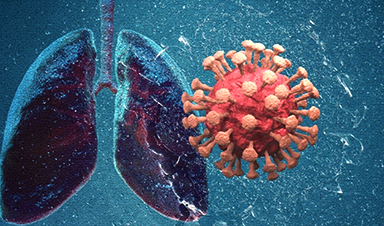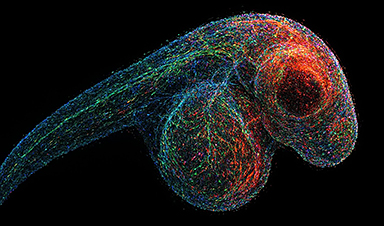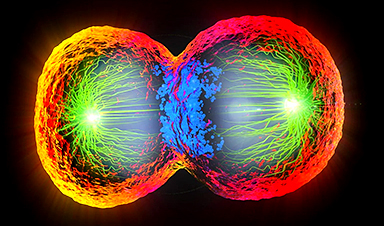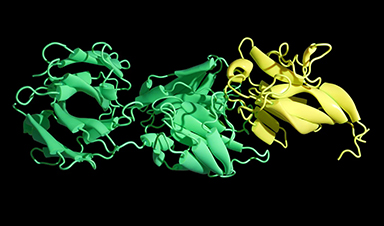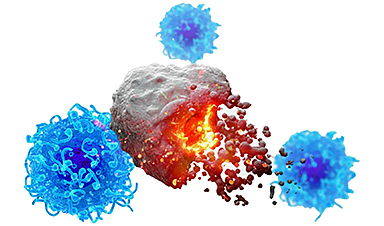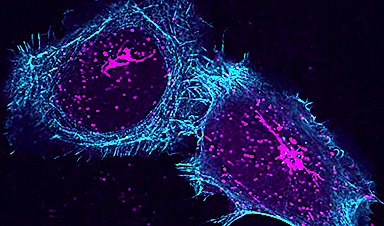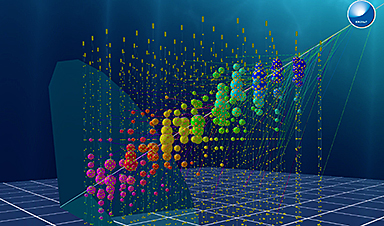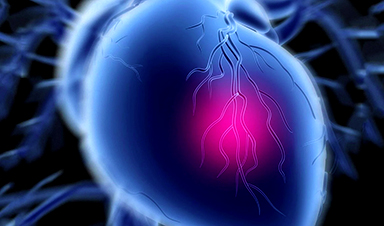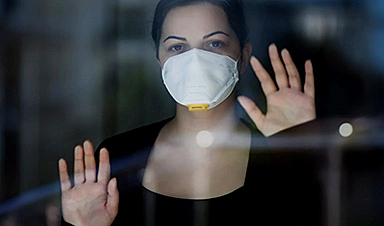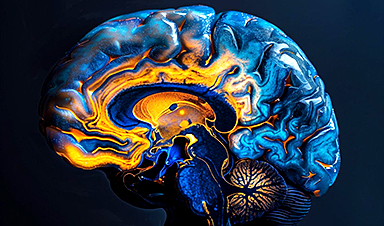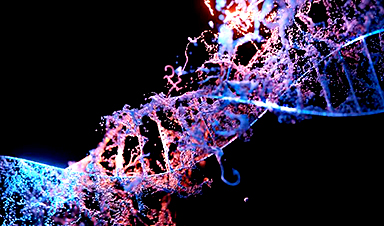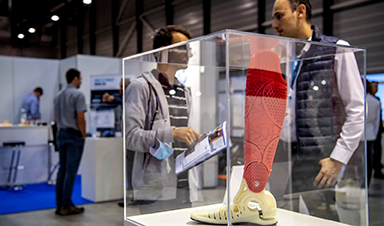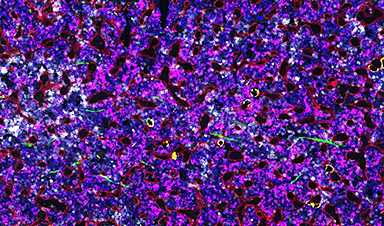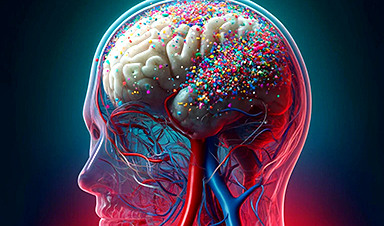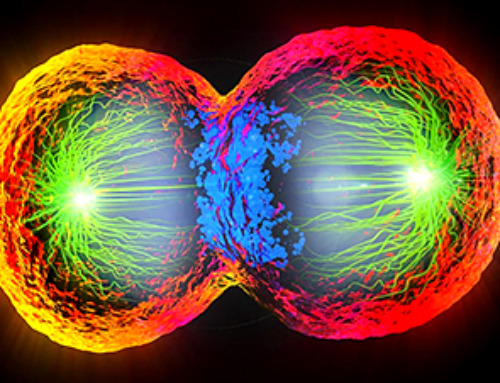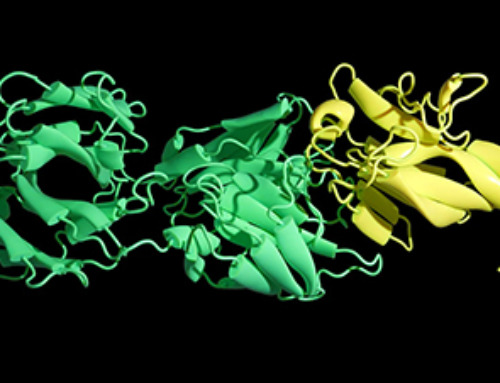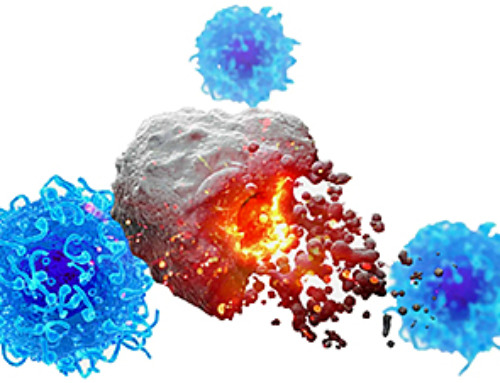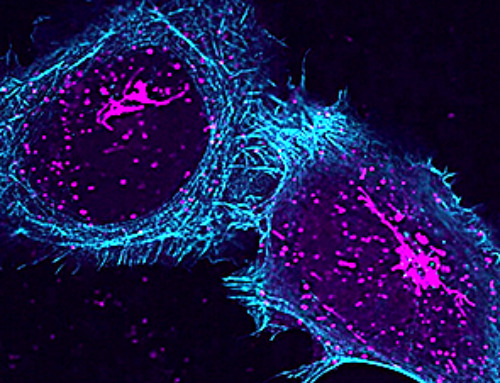The coronavirus disease 2019 (COVID-19) pandemic has caused several waves of infections in many world regions, so strong as to overwhelm local healthcare services. In this new situation, faced with an unknown virus, the need is to produce clinical guidelines that help recognize and manage critical COVID-19. Meanwhile, conditions such as chronic obstructive pulmonary disease (COPD) are linked to a markedly increased risk of death in community pneumonia.
A new preprint available on the bioRxiv* preprint server uses computational algorithms to tease out the interrelationships between these two conditions that cause similar outcomes. Based on protein-protein interactions (PPIs), the paper shows the presence of ten genes that overlap between the two illnesses, also shared by several other deadly and debilitating diseases.
The severe acute respiratory syndrome coronavirus 2 (SARS-CoV-2) spread worldwide and has led to approximately five million deaths so far. Older adults are by far the worst affected by COVID-19, with this illness accounting for 80% of all deaths in the 65-and-above age group.
Interestingly, this age group is also at the highest risk of COPD. In this condition, found in a tenth of people over 40 years, the airflow is limited, mostly caused by chronic bronchitis or emphysema. Many genetic and environmental factors play a part in the occurrence of this disease, including irritant chemical inhalation or smoking, though only about a fifth of smokers have COPD.
While COPD patients rarely acquire COVID-19, the risk of death is much higher than non-COPD patients. Accordingly, recent recommendations have been made to update the diagnostic and treatment protocols for COPD.
Independent of COVID-19, COPD is responsible for the third-largest number of deaths in the world. Considered a polygenic condition, it renders its victims susceptible to severe disease and death following the triggering of a cytokine storm by SARS-CoV-2 infection.
The latter causes symptoms only after about five days, with death, if it occurs, taking place at an average of 14 days later, depending on the patient’s age and immunity.
However, COPD is a treatable condition, if not curable, with current therapies able to maintain a high quality of life and keep the patient safe from other respiratory illnesses. When it coexists with COVID-19, the respiratory tract suffers because of the pre-existing lung injury. Thus, severe COVID-19 is fourfold more likely in such patients.
COPD patients have higher levels of the viral entry receptor, the angiotensin-converting enzyme 2 (ACE2), as do smokers.
What did the study show?
The researchers constructed a PPI network using available data on ~5,500 COVID-19 and 296 COPD gene expression profiles to elucidate the genes involved in such complicated conditions.
They first identified 248 overlapping genes, of which ten were found to be the top common genes. These are implicated in cell-cell communication and metabolism, development, the response to stimuli, and biological regulation. These genes are mostly also involved in pathways implicated in malaria, trypanosomiasis, and inflammatory bowel disease (IBD).
The Interleukin 10 (IL 10) gene is the first common gene, or the hub gene, expressing a regulatory cytokine that modulates the inflammatory response. It is markedly upregulated in associated with the cytokine storm in severe COVID-19 patients admitted to the intensive care unit (ICU).
It is, however, low in patients with COPD who have dramatic airway inflammation. IL-10 thus serves as a marker of disease severity and is useful for monitoring treatment.
The study similarly elucidates the role of Toll-like receptor 4 (TLR4), expressed by multiple immune cells and found to be required for the initiation of inflammatory responses. When it increases excessively, hyperinflammation may set in.
The TLRs are driven by the recognition of viral RNA or dsDNA intermediate forms (called pathogen-associated molecular patterns (PAMPs). These are formed from the viral genome and recognized by pattern recognition receptors, especially the TLRs, triggering further inflammatory antiviral cascades that eventually clear the virus.
TLR4 is found to have the highest PPI with the viral spike protein compared to other TLRs. SARS-CoV-2 is found to enhance the expression of interferon-stimulated genes (ISGs) in the respiratory tract. However, the higher levels of ISG expression can cause greater ACE2 expression as well. Research shows how lung surfactants block the infection by TLR4 binding and activation.
Other hub genes include the Tumor necrosis factor (TNF), a key inflammatory mediator that is elevated in acute inflammation due to viral infection, and chronic or systemic inflammation. High TNF levels are found in patients with COPD and patients with acute COVID-19 and COPD.
Fourthly, IL6 is a potent inflammatory cytokine, with multiple actions in the inflammatory cascade. It is produced by many cell types, including epithelial airway cells and alveolar macrophages. High IL6 levels are associated with worse lung function and an accelerated rate of deterioration and skeletal muscle weakness in COPD.
IL8, also known as CXCL8, is a mediator for neutrophil tracking and is implicated in inflammatory processes, notably after viral infections. Respiratory muscle weakness in patients with COPD is traceable in part to IL8 activity, with rises in the level of this cytokine during COPD exacerbations. High CXCL8 levels are suggested to be the cause of death in severe COVID-19.
IL4 is an activator of the JAK-STAT pathway that drives inflammation and mediates hyper-responsiveness of the airways, a key COPD element.
The seventh hub gene is ICAM1, an intercellular adhesion molecule that is overproduced during early inflammation, causing the premature release of neutrophils. This molecule is elevated in COPD patients. With moderate to severe COVID-19, ICAM1 levels are high and increasing but drop in convalescence.
This may mean that these molecules are markers of COVID-19 severity. Besides, they also trigger coagulation defects. The four intracellular binding sites for SARS-CoV-2 within human cells are highly expressed in COPD patients.
The eighth hub gene is interferon-gamma (IFN-γ). This is known to be a key risk gene for COVID-19 patients with lung disease. COPD patients have a more than five times higher risk of severe COVID-19
TLR2 is the ninth hub gene, associated with a decline in lung function and evidence of inflammation in sputum, indicating its role in COPD pathogenesis and exacerbation. It is also known to recognize SARS-CoV-2 particles and may be part of the infection-pulmonary embolism pathway.
The last of the hub genes is IL18, which is thought to be tied to the abnormal inflammatory pathways in COPD. Anti-IL 18 antibodies neutralize the damage and inflammation caused by COPD in preclinical models.
News
DNA Microscopy Creates 3D Maps of Life From the Inside Out
What if you could take a picture of every gene inside a living organism—not with light, but with DNA itself? Scientists at the University of Chicago have pioneered a revolutionary imaging technique called volumetric DNA microscopy. It builds [...]
Scientists Just Captured the Stunning Process That Shapes Chromosomes
Scientists at EMBL have captured how human chromosomes fold into their signature rod shape during cell division, using a groundbreaking method called LoopTrace. By observing overlapping DNA loops forming in high resolution, they revealed that large [...]
Bird Flu Virus Is Mutating Fast – Scientists Say Our Vaccines May Not Be Enough
H5N1 influenza is evolving rapidly, weakening the effectiveness of existing antibodies and increasing its potential threat to humans. Scientists at UNC Charlotte and MIT used high-performance computational modeling to analyze thousands of viral protein-antibody interactions, revealing [...]
Revolutionary Cancer Vaccine Targets All Solid Tumors
The method triggers immune responses that inhibit melanoma, triple-negative breast cancer, lung carcinoma, and ovarian cancer. Cancer treatment vaccines have been in development since 2010, when the first was approved for prostate cancer, followed [...]
Scientists Uncover Hidden Protein Driving Autoimmune Attacks
Scientists have uncovered a critical piece of the puzzle in autoimmune diseases: a protein that helps release immune response molecules. By studying an ultra-rare condition, researchers identified ArfGAP2 as a key player in immune [...]
Mediterranean neutrino observatory sets new limits on quantum gravity
Quantum gravity is the missing link between general relativity and quantum mechanics, the yet-to-be-discovered key to a unified theory capable of explaining both the infinitely large and the infinitely small. The solution to this [...]
Challenging Previous Beliefs: Japanese Scientists Discover Hidden Protector of Heart
A Japanese research team found that the oxidized form of glutathione (GSSG) may protect heart tissue by modifying a key protein, potentially offering a novel therapeutic approach for ischemic heart failure. A new study [...]
Millions May Have Long COVID – So Why Can’t They Get Diagnosed?
Millions of people in England may be living with Long Covid without even realizing it. A large-scale analysis found that nearly 10% suspect they might have the condition but remain uncertain, often due to [...]
Researchers Reveal What Happens to Your Brain When You Don’t Get Enough Sleep
What if poor sleep was doing more than just making you tired? Researchers have discovered that disrupted sleep in older adults interferes with the brain’s ability to clean out waste, leading to memory problems [...]
How to prevent chronic inflammation from zombie-like cells that accumulate with age
In humans and other multicellular organisms, cells multiply. This defining feature allows embryos to grow into adulthood, and enables the healing of the many bumps, bruises and scrapes along the way. Certain factors can [...]
Breakthrough for long Covid patients who lost sense of smell
A breakthrough nasal surgery has restored the sense of smell for a dozen long Covid patients. Experts at University College London Hospitals NHS Foundation Trust successfully employed a technique typically used for correcting blocked nasal passages, [...]
Scientists Invent Plastic That Can Dissolve In Seawater In Just A Few Hours
Plastic waste and pollution in the sea have been among the most serious environmental problems for decades, causing immense damage to marine life and ecosystems. However, a breakthrough discovery may offer a game-changing solution. [...]
Muscles from the 3D printer
Swiss researchers have developed a method for printing artificial muscles out of silicone. In the future, these could be used on both humans and robots. Swiss researchers have succeeded in printing artificial muscles out [...]
Beneficial genetic changes observed in regular blood donors
Researchers at the Francis Crick Institute have identified genetic changes in blood stem cells from frequent blood donors that support the production of new, non-cancerous cells. Understanding the differences in the mutations that accumulate [...]
Shocking Amounts of Microplastics in the Brain – It Could Be Increasing Our Risk of Dementia
The brain has higher concentrations of plastic particles compared to other organs, with increased levels found in dementia patients. In a comprehensive commentary published in Brain Medicine, researchers highlight alarming new evidence of microplastic accumulation [...]
Baffling Scientists for Centuries: New Study Unravels Mystery of Static Electricity
ISTA physicists demonstrate that contact electrification depends on the contact history of materials. For centuries, static electricity has intrigued and perplexed scientists. Now, researchers from the Waitukaitis group at the Institute of Science and [...]
